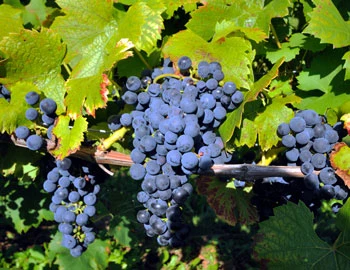
Philipponnat Royale Réserve Brut
AOC Champagne, 9000 ml
| Grape variety: | Pinot noir, Chardonnay, Pinot meunier |
| Producer: | Champagne Philipponnat |
| Origin: | France / Champagne |
| Other bottle sizes: |
Description
Spiciness and fruitiness balance each other wonderfully and with intensity in the mouth, supported by lively and dense effervescence. Its golden colour and fine bubbles are ravishing to the eye. In the nose, the aroma palette ranges from almond and butter pastries, red currant jelly and apple pie to jasmine, candied oranges and apricot. On the palate, nothing but pleasant tartness, and a soothing depth of fruit and mineral flavours, which keep on expressing themselves in a long finish.
Celebrate the Art of Sabring!

With its elegant design, this champagne sabre is not only an impressive eye-catcher at any celebration and an indispensable tool for stylish sabering, but also the perfect gift for all passionate sparkling wine lovers.
Attributes
| Origin: | France / Champagne |
| Grape variety: | Pinot noir, Chardonnay, Pinot meunier |
| Ripening potential: | 1 to 4 years |
| Drinking temperature: | 10 to 12 °C |
| Food Pairing: | Apéro riche, Sushi, Sashimi, Ceviche, Oysters, Meat terrine, Cakes, biscuits, pastries |
| Vinification: | bottle fermentation |
| Harvest: | hand-picking |
| Maturation: | in steel tank, in small barrels, on the yeast |
| Maturation duration: | 36 months |
| Volume: | 12.0 % |
| Note: | Contains sulphites |
Chardonnay
King or beggar?
Hardly any variety of vine shows such a broad spectrum of quality as the Chardonnay. Its wines range from faceless neutrality to breath-taking class. It is an extremely low-maintenance vine, which explains why it is grown around the world – even in places where it probably should not be. The aromas of the Chardonnay variety are not very pronounced: a bit of green apple, a little hazelnut; in warmer latitudes, also melon and exotic fruits. The wines are often defined by maturing in casks. They develop more or less subtle notes of butter, toasted bread and vanilla. The grapes achieve their highest expression in their region of origin, Burgundy. Its heart beats in the Côte de Beaune: one might think of the plant growth of Meursault or Puligny-Montrachet. With their finesse and complexity, they can survive for decades. Chardonnay also achieves first class in some Blanc-de-Blancs champagnes. It additionally yields great wines in the Burgundian Chablis, and increasingly in Australia and Chile. A simple rule of thumb for pairing with food: When butter and cream are involved, you cannot go wrong with Chardonnay.

Pinot meunier
Freshness boost for champagnes
Many fine white hairs on the underside of the leaves give this red grape its name. "Meunier" translates to miller, an allusion to the impression that the plant has been dusted with freshly ground flour. Its main habitat is in Champagne. Alongside Pinot noir and Chardonnay, it forms the third component of the classic champagne cuvée. It contributes fresh acidity and youthful fruit to the sparkling wines. It is only very rarely into champagne by itself, but the few examples are worth tasting. In German, Pinot Meunier is also known as Müllerrebe or misleadingly as Schwarzriesling (black Riesling).

Pinot noir
Blueprint of the terroir
No other variety expresses its terroir as precisely as Pinot noir. It is a sensitive, fragile grape. But when it succeeds, it gives the world some of its very greatest wine plants. It especially excels in Burgundy, where it has been cultivated for at least 700 years. Even in the middle ages, it was considered so precious that it was kept separate from other grapes so as to not diminish its value. The finest examples are delicate and fragrant with aromas of cherries and red berries. With maturity, notes of forest floor, leather and truffles enter as well. An irresistible fruity sweetness still shines through, even after several decades. The Pinot noir does well in cool locations: in Switzerland and in Germany, where it is known as Blauburgunder and Spätburgunder respectively; in Alsace and in South Tyrol, in Oregon, New Zealand and Tasmania. Not least, it yields fantastic champagnes. It is a wonderful culinary companion. With its soft tannins and charming bouquet, it meshes with everything, from Güggeli and cheeses to fried fish.

France
France – Philosophy in a bottle
According to French philosophy, wine should be an expression of the soil and climate. They use the word “terroir” to describe this. Terroir makes every wine different, and many especially good. French wine is regarded worldwide as an expression of cultural perfection. The French believe that humans are responsible for the quality of the berries, the vine variety for their character, and nature for the quantity. This philosophy can be expressed succinctly as: “the truth is the vineyard, not the man.”

